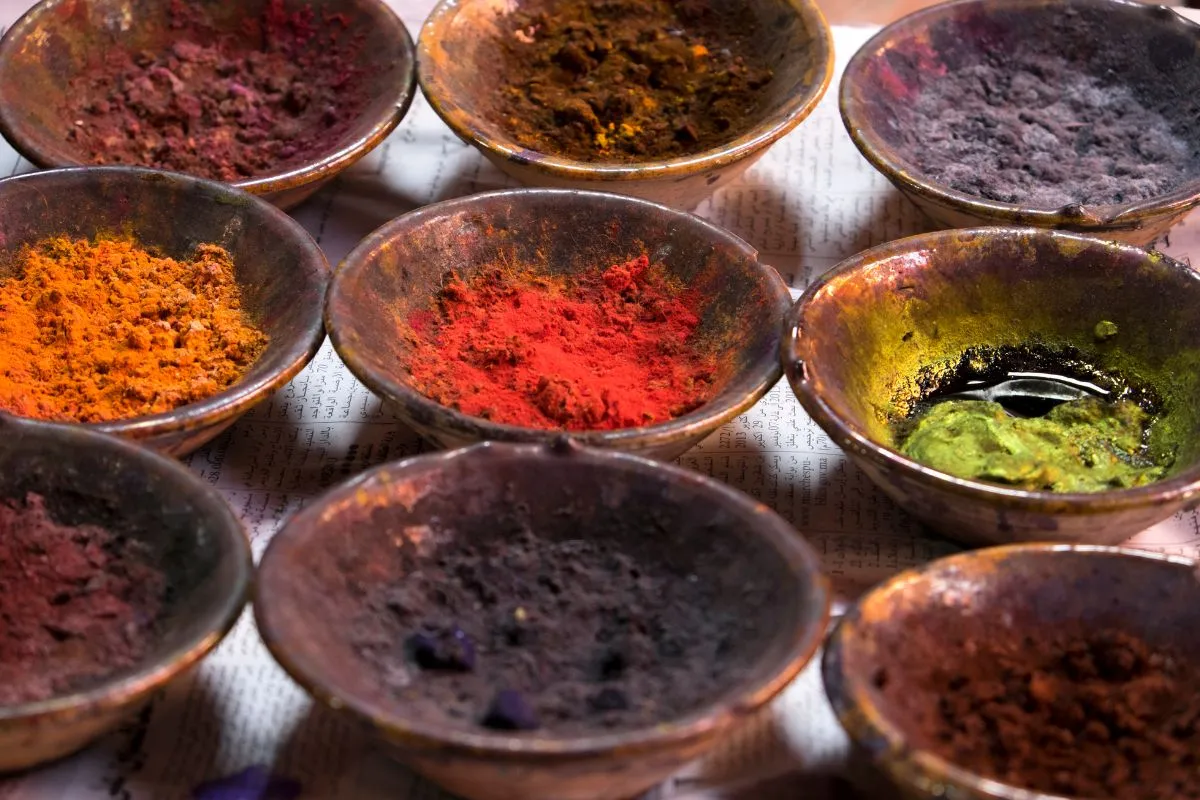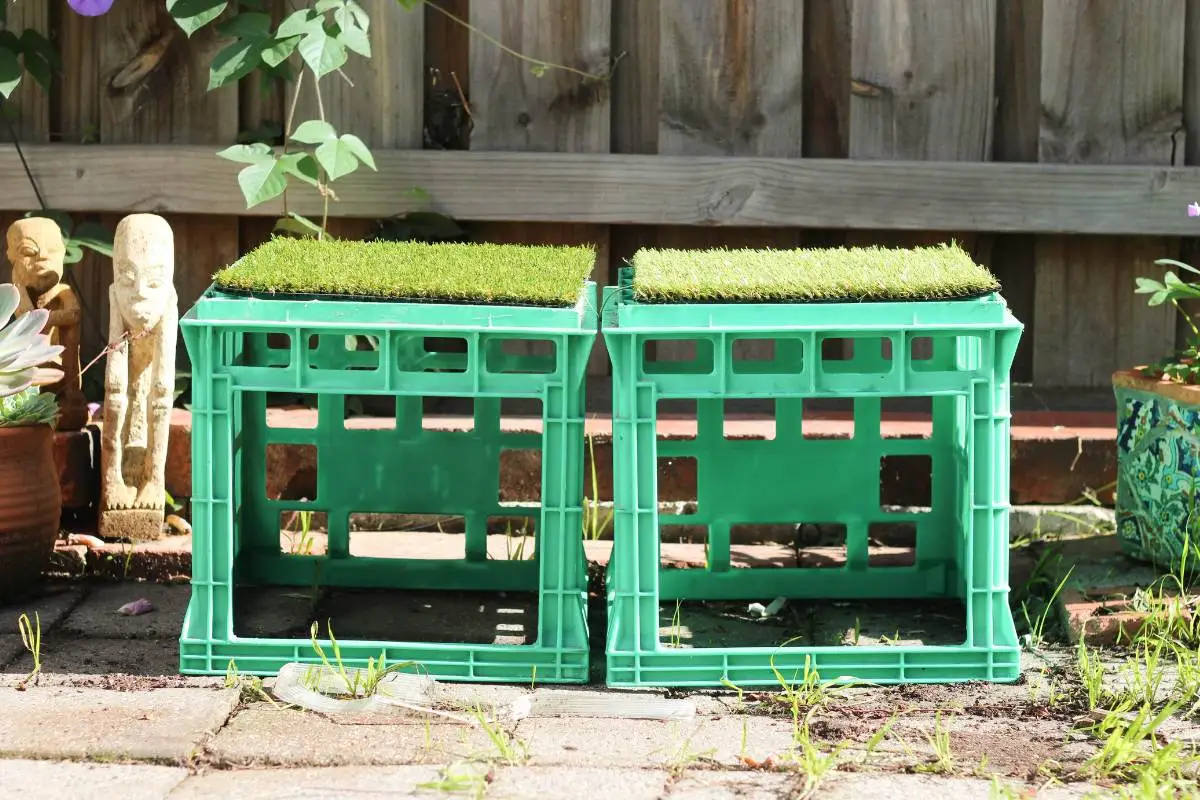DIY Plant-Based Dyes: A Comprehensive Guide for Artists and DIY Enthusiasts
In a world increasingly focused on sustainability, the use of plant-based dyes has emerged as a popular choice for artists and DIY enthusiasts alike.
This guide will explore the fascinating world of natural dyes, covering their benefits, the dyeing process, tips for creating beautiful and vibrant colors using materials you can find at home or in your garden, and much more.
The Benefits of Plant-Based Dyes
Plant-based dyes offer numerous advantages over synthetic dyes, making them an excellent choice for eco-conscious creators. Here are some of the key benefits:
- Eco-Friendly: Derived from natural sources, plant-based dyes are biodegradable and less harmful to the environment.
- Non-Toxic: These dyes are generally safer for both the user and the environment, reducing exposure to harmful chemicals.
- Unique Colors: Each dyeing process can yield different shades and hues, leading to unique and personal results.
- Cultural Heritage: Using natural dyes connects us to traditional practices and sustainable methods passed down through generations.
Getting Started with Plant-Based Dyes
Before diving into the dyeing process, it’s essential to gather your materials and understand the basics. Here’s what you need:
Materials Needed
- Natural dye sources: Common options include:
- Onion skins (for yellow to orange hues)
- Red cabbage (for blues and purples)
- Beetroot (for deep pinks and reds)
- Avocado pits and skins (for soft pinks)
- Turmeric (for bright yellow)
- Mordants: Substances that help fix the dye to the fabric. Common mordants include:
- Alum (safe and effective)
- Iron (darkens colors)
- Cream of tartar (for brighter colors)
- Fabric or material to dye: Cotton, silk, wool, and other natural fibers work best.
- Containers: Use stainless steel or glass for dyeing, as metals can react with the dyes.
- Stirring tools: Wooden or stainless steel spoons.
The Dyeing Process
Here’s a step-by-step guide to creating your own plant-based dyes:
Step 1: Preparing Your Materials
- Choose Your Dye Source: Select a plant material based on the color you desire.
- Prep the Dye: Chop the plant material into small pieces to increase surface area. This will help extract more color.
- Soak the Material: Place the chopped dye source in a pot and cover with water. Allow it to soak for several hours or overnight to extract the color.
Step 2: Mordanting the Fabric
- Prepare the Mordant: Dissolve your chosen mordant in hot water according to the instructions (usually about 1 part mordant to 4 parts water).
- Soak the Fabric: Submerge the fabric in the mordant solution for 30-60 minutes. This step helps the dye bond with the fabric.
- Rinse and Dry: Remove the fabric, rinse it in cold water, and let it dry.
Step 3: Dyeing the Fabric
- Strain the Dye: After soaking, strain the dye solution to remove plant material.
- Heat the Dye: Bring the strained dye solution to a simmer.
- Add the Fabric: Place your prepped fabric into the dye bath, ensuring it’s fully submerged. Stir gently to avoid uneven coloring.
- Monitor the Color: Allow the fabric to soak until you achieve the desired color (anywhere from 30 minutes to several hours, depending on the dye source and the intensity you want).
- Rinse and Dry: Once the desired color is reached, remove the fabric from the dye bath, rinse in cold water, and hang it to dry away from direct sunlight.
Tips for Success
- Experiment: Feel free to mix different plant materials to create unique colors.
- Test Swatches: Always do a test swatch with your fabric to see how the color develops.
- Record Your Process: Keep a journal of your dyeing experiments, noting the plant materials, mordants used, and the results. This will help you replicate successful dyeing projects in the future.
Common Mistakes to Avoid
- Using Synthetic Fabrics: Plant-based dyes work best with natural fibers. Avoid synthetic materials as they may not absorb the dye well.
- Skipping the Mordant: Mordanting is crucial for achieving vibrant and long-lasting colors. Don’t skip this step!
- Not Monitoring Color Development: Natural dyes can vary greatly, so keep an eye on the color as it develops to avoid over-dyeing.
Exploring Color Variations
Different plant materials yield different shades and colors. Here are some common dye sources and the colors they produce:
| Dye Source | Color Range |
|---|---|
| Onion Skins | Yellow to orange |
| Red Cabbage | Blue to purple |
| Beetroot | Deep pink to red |
| Avocado Pits | Soft pink |
| Turmeric | Bright yellow |
| Spinach | Green |
| Black Beans | Dark blue to gray |
| Pomegranate Skins | Tan to brown |
Mixing Colors
You can create new shades by mixing different plant materials. For example, mixing turmeric and red cabbage can produce a range of greens and browns. Be adventurous and document your findings!
Dyeing Techniques
Beyond the basic immersion dyeing, there are several techniques you can explore:
- Tie-Dye: Create patterns by tying or folding the fabric before dyeing. This technique is fun and allows for creativity in design.
- Shibori: A Japanese dyeing technique that involves folding, twisting, or bunching fabric, then binding it before dyeing to create intricate patterns.
- Eco-Printing: Place plant materials directly on fabric and bundle them up tightly, then steam or simmer to transfer the colors and patterns from the leaves.
Safety Precautions
When working with natural dyes and mordants, keep safety in mind:
- Wear Gloves: Some plant materials can stain your skin.
- Work in a Ventilated Area: If using strong mordants, ensure good airflow.
- Keep Materials Away from Children and Pets: Some natural materials may not be safe for consumption.
Caring for Your Dyed Fabrics
Once you have dyed your fabrics, it’s essential to care for them properly to maintain their vibrant colors:
- Washing: Hand wash your dyed items in cold water with mild soap. Avoid harsh detergents.
- Drying: Air dry your fabrics away from direct sunlight to prevent fading.
- Storage: Store dyed fabrics in a cool, dry place to preserve their colors.
Inspiration for DIY Projects
Here are some inspiring ideas for projects using your plant-based dyes:
- Tie-Dyed T-Shirts: Use your favorite plant dyes to create unique t-shirts for yourself or gifts.
- Hand-Dyed Scarves: Experiment with colors and patterns on silk or cotton scarves.
- Wall Art: Create stunning wall hangings using dyed fabric and different dyeing techniques.
- DIY Home Décor: Use your dyed fabrics to create pillowcases, table runners, or curtains for a personalized touch in your home.
Additional Resources for Plant-Based Dyes
For those interested in diving deeper into the world of plant-based dyes, several resources can help expand your knowledge and skills:
Books
- “Harvesting Color” by Rebecca Burgess: This book provides a comprehensive guide to dyeing with plants and includes numerous recipes and techniques.
- “The Art of Natural Dyeing” by J. Marsha Michler: A detailed resource that explores various natural dyeing methods and materials.
Online Courses and Tutorials
- YouTube Channels: Channels like “The Natural Dyeing Company” and “Dyeing with Natural Dyes” offer free tutorials on various dyeing techniques.
- Workshops: Look for local workshops or online classes that focus on natural dyeing. These can provide hands-on experience and expert guidance.
Online Communities
Join online forums and social media groups focused on natural dyeing. These platforms allow you to share your projects, ask questions, and learn from others in the community.
A Historical Perspective on Natural Dyes
Natural dyes have been used for thousands of years, deeply rooted in many cultures around the world. Here’s a brief overview of the history of plant-based dyes:
- Ancient Civilizations: The use of natural dyes dates back to ancient Egypt, where indigo and henna were popular for dyeing textiles and skin.
- Middle Ages: In Europe, natural dyes became essential for the textile industry. The development of dye gardens became common, where various plants were cultivated for their dyeing properties.
- Colonial America: Early settlers brought their dyeing traditions, utilizing local plants such as walnut hulls and madder root.
Understanding the history of natural dyes enriches the experience of using them, connecting you to a broader tradition of creativity and sustainability.
Future of Plant-Based Dyes
As sustainability becomes a more prominent concern in the textile and craft industries, plant-based dyes are likely to play an increasingly important role.
Innovations in dyeing techniques and the growing popularity of eco-friendly materials suggest a bright future for natural dyes.
- Sustainable Fashion: Many designers are returning to natural dyes, creating unique, sustainable collections that resonate with environmentally-conscious consumers.
- Research and Development: Ongoing research into plant-based dyeing methods continues to improve colorfastness and expand the range of colors available from various plants.
Engaging with Your Community
Encouraging others to explore plant-based dyes can help foster a community dedicated to sustainability and creativity. Consider organizing local dyeing events or workshops to share your knowledge and inspire others to join in.
- Community Gardens: Collaborate with local community gardens to grow dye plants, promoting awareness of sustainable practices.
- Art Exhibitions: Host exhibitions showcasing dyed textiles and art made with natural dyes, highlighting the beauty and versatility of plant-based materials.
Conclusion: Embracing the Art of Natural Dyeing
Using plant-based dyes is a creative and sustainable practice that connects us to nature and our cultural heritage. By exploring the various techniques and materials available, you can develop your skills while contributing to a more sustainable future.
From simple tie-dye projects to intricate eco-printing techniques, the world of natural dyes offers endless possibilities for artistic expression. So gather your materials, tap into your creativity, and let nature’s colors inspire your next project!





